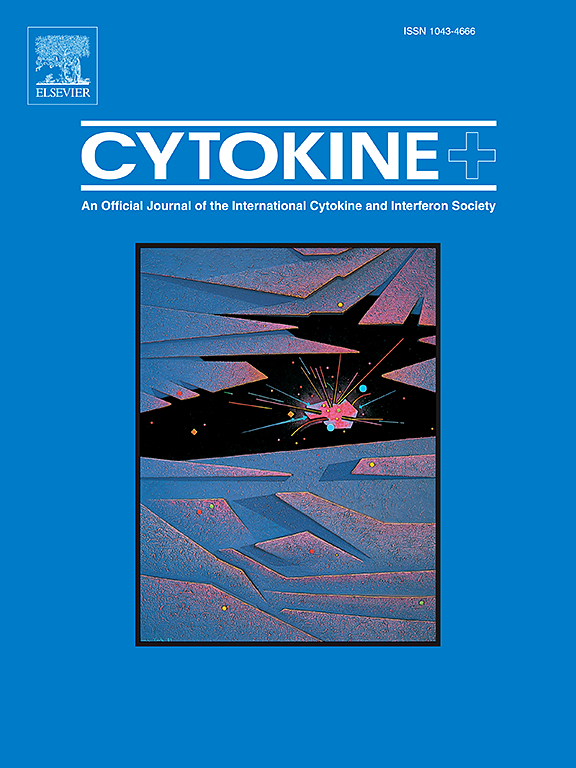多诺瓦利什曼原虫感染驱动的高水平IL-10导致人类内脏利什曼病低白蛋白血症
IF 3.7
3区 医学
Q2 BIOCHEMISTRY & MOLECULAR BIOLOGY
引用次数: 0
摘要
内脏利什曼病是由多诺瓦利什曼原虫引起的,其临床病理特征为肝肿大伴肝功能丧失等。白蛋白是肝功能的重要参数,执行各种任务,如维持血管渗透平衡,防止组织液泄漏,载体特性等。检测了人类VL患者和感染多诺瓦利什曼原虫的仓鼠(ExVL)的白蛋白水平。通过IL-10阻断和JAK1/STAT3抑制,在HepG2细胞上检测来自多诺瓦利什曼原虫感染单核细胞的IL-10和重组IL-10对CEBP-β和白蛋白的表达。CEBP-β与白蛋白启动子结合并沉默以证实其在白蛋白表达中的作用。低白蛋白,即低白蛋白血症,见于内脏利什曼病和ExVL。在两种模型中,其水平与寄生负荷和肝脏IL-10呈负相关。当用感染单核细胞的利什曼原虫驱动的IL-10和重组IL-10处理时,HepG2细胞的白蛋白表达以JAK1/ stat3依赖的方式显著降低。为了进一步探索内脏利什曼病低白蛋白血症的分子机制,研究人员利用染色质免疫沉淀PCR技术发现,具有三种亚型(LAP1、LAP2和LIP)的转录因子CEBP-β在重组IL-10处理后增加,并与白蛋白启动子的D位点结合。shRNA沉默结果证实CEBP-β介导的白蛋白水平下降。我们的研究结果表明,利什曼原虫感染后肝脏IL-10升高以JAK1/STAT3和CEBP-β依赖的方式降低白蛋白水平。本文章由计算机程序翻译,如有差异,请以英文原文为准。

Leishmania donovani infection-driven high levels of IL-10 causes hypoalbuminemia in human visceral leishmaniasis
Visceral leishmaniasis, caused by Leishmania donovani is characterized by clinicopathological features like hepatomegaly with loss of liver function, etc. Albumin is an essential parameter of liver function, performing various tasks like maintaining osmotic balance in blood vessels, preventing tissue fluid leakage, carrier properties, etc. Human VL patients and Leishmania donovani-infected hamsters (ExVL) were tested for their albumin levels. IL-10 derived from Leishmania donovani-infected monocytes and recombinant IL-10 were tested on HepG2 cells for CEBP-β and albumin expression with IL-10 blocking and JAK1/STAT3 inhibition. CEBP-β binding onto the albumin promoter and its silencing were performed to confirm its role in albumin expression. Low albumin, i.e., hypoalbuminemia, was found in visceral leishmaniasis and ExVL. Its levels were inversely associated with parasitic load and hepatic IL-10 in both models. When treated with Leishmania donovani-driven IL-10 from the infected monocytes and recombinant IL-10, there was a significant decrease in albumin expression from HepG2 cells in a JAK1/STAT3-dependent manner. To further explore the molecular mechanism behind hypoalbuminemia in Visceral leishmaniasis, CEBP-β, a transcription factor having three isoforms (LAP1, LAP2, and LIP), was shown to increase upon recombinant IL-10 treatment and bind to the D site of the albumin promoter using Chromatin immunoprecipitation PCR. shRNA silencing results confirm CEBP-β-mediated decrease in albumin levels. Our findings showed that increased hepatic IL-10 upon Leishmania donovani infection reduces albumin levels in a JAK1/STAT3 and CEBP-β-dependent manner.
求助全文
通过发布文献求助,成功后即可免费获取论文全文。
去求助
来源期刊

Cytokine
医学-免疫学
CiteScore
7.60
自引率
2.60%
发文量
262
审稿时长
48 days
期刊介绍:
The journal Cytokine has an open access mirror journal Cytokine: X, sharing the same aims and scope, editorial team, submission system and rigorous peer review.
* Devoted exclusively to the study of the molecular biology, genetics, biochemistry, immunology, genome-wide association studies, pathobiology, diagnostic and clinical applications of all known interleukins, hematopoietic factors, growth factors, cytotoxins, interferons, new cytokines, and chemokines, Cytokine provides comprehensive coverage of cytokines and their mechanisms of actions, 12 times a year by publishing original high quality refereed scientific papers from prominent investigators in both the academic and industrial sectors.
We will publish 3 major types of manuscripts:
1) Original manuscripts describing research results.
2) Basic and clinical reviews describing cytokine actions and regulation.
3) Short commentaries/perspectives on recently published aspects of cytokines, pathogenesis and clinical results.
 求助内容:
求助内容: 应助结果提醒方式:
应助结果提醒方式:


